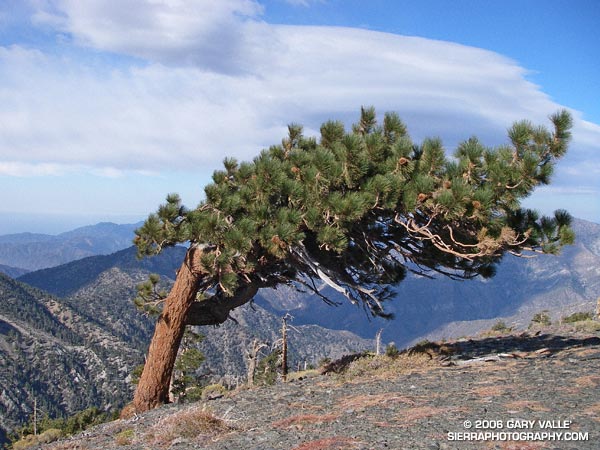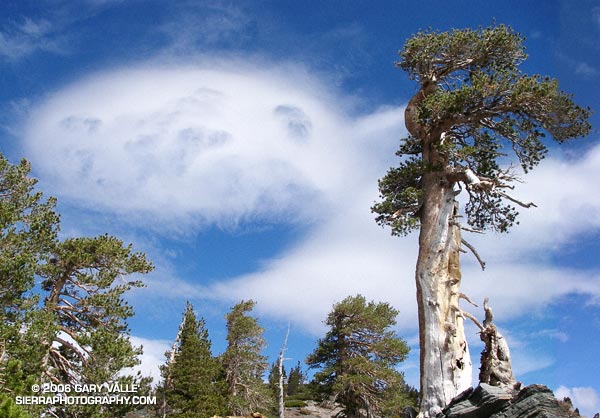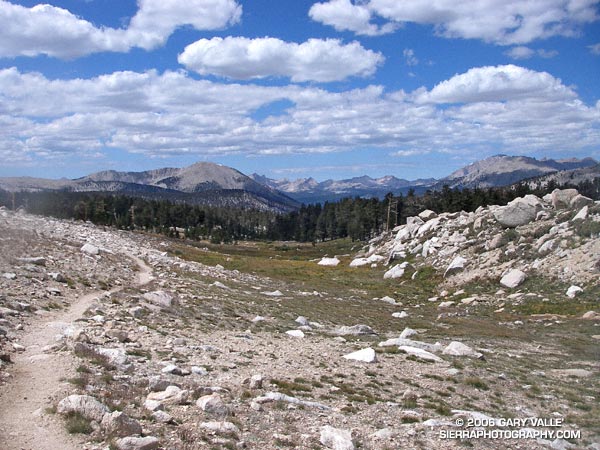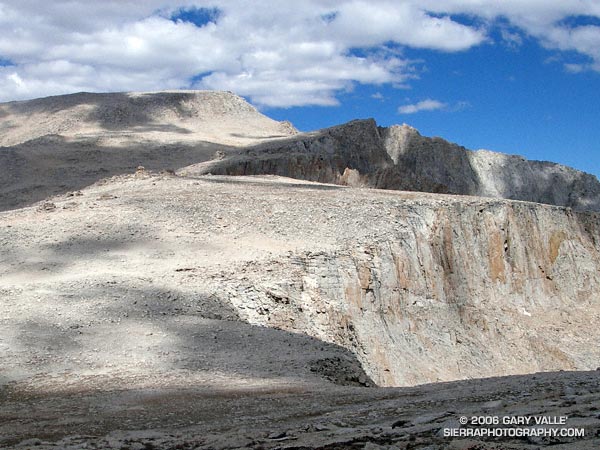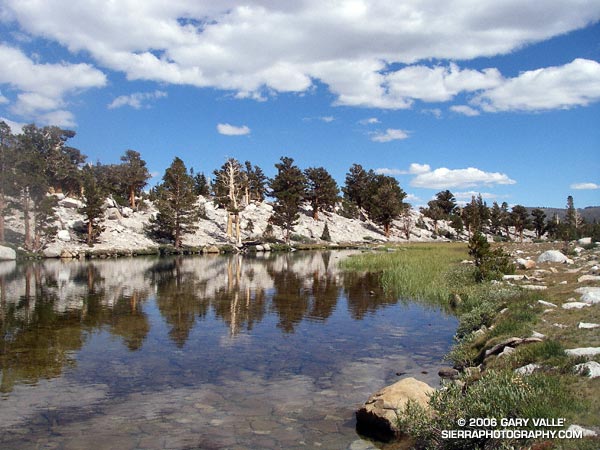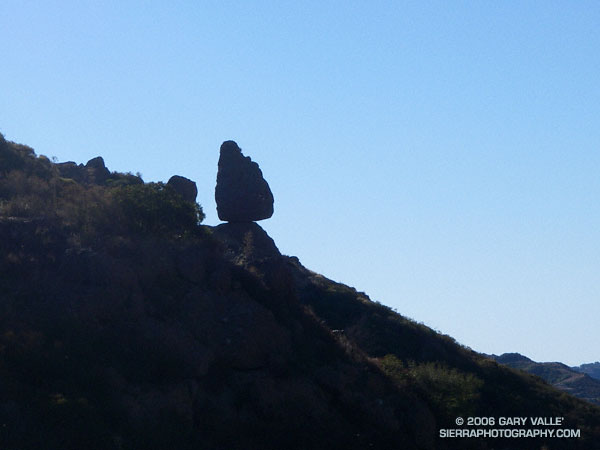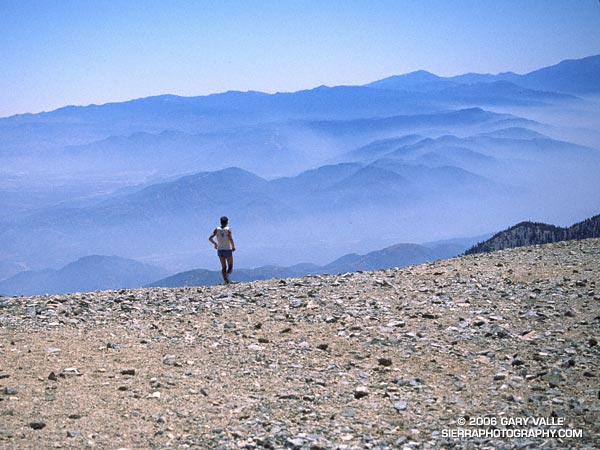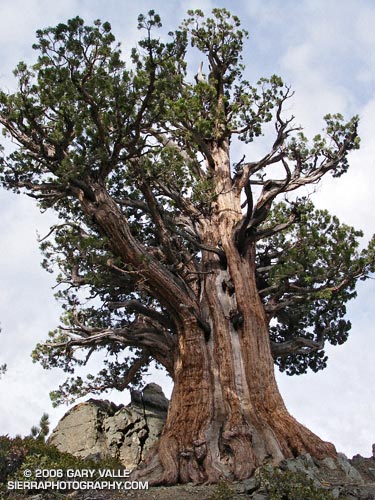
Updated September 19, 2010.
This Sierra Juniper (Juniperus occidentalis var. australis) resides at an elevation of 9000′ on the rocky slopes of Pine Mountain in the Sheep Mountain Wilderness of Southern California. It is an impressive and aged tree. The question is, how old might it be?
Junipers are very slow growing and seem to prefer the dry and difficult conditions that can produce very long-lived trees. Two junipers more than 2000 years old are listed in OLDLIST, a database of scientifically supported tree ages maintained by Rocky Mountain Tree-Ring Research, Inc.
Both of these trees are located in the Sierra near Sonora Pass. OLDLIST lists the age of the Bennett Juniper, a living tree, at an extrapolated age of 2200 years. This estimate is based on a crossdated incremental core. The Scofield Juniper, a tree that died in 1165, has been crossdated at an age of 2675 years.
The Bennett Juniper is a massive tree. The National Register of Big Trees lists its circumference at 481 inches, and height at 78 feet. The juniper on Pine Mountain is not nearly as large, but it is still a sizeable tree.
Update 9/19/2010. I measured the circumference of the Pine Mountain juniper at 14′ 6.5″ or 174.5 inches. This works out to an average diameter of 55.5 inches. The tree is more or less elliptical in cross section, with the major axis aligned along the ridgeline. The tree’s diameter along the major axis is estimated to be 65-70 inches.
If the Bennett Juniper’s diameter is about 153 inches and its age is 2200 years, its average growth in diameter would be 0.0695 inch a year. Applying this same growth rate to the average diameter of the Pine Mountain tree, and its estimated maximum diameter, yields an age range estimate of 800 to 1007 years.
But relative size may not be indicative of relative age. The Pine Mountain Juniper’s shorter rain season and rocky, ridgetop location likely resulted in a slower growth rate than the Bennett tree. The Wally Waldron Limber Pine on nearby Mt. Baden-Powell is estimated to be 1500 years old, and some other Limber Pines on Baden-Powell are thought to be 2000 years old. Whatever its exact age the Pine Mountain Juniper is an extraordinary tree.
The photographs in this post (except for the Wally Waldron tree) were taken on the Mt. Baldy North Backbone Trail and North Backbone Trail Revisited run/hikes.
Some related posts: Inspiration Point to the Pine Mountain Juniper, Mt. Baldy Run Over the Top

